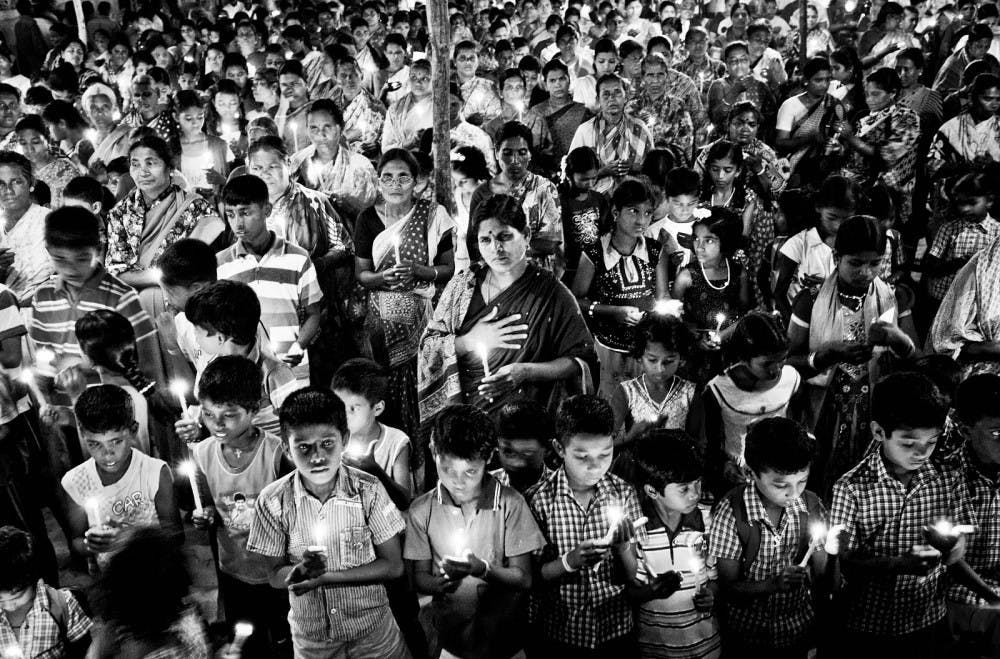The Atomic Photographers Guild and the Department of Art and Art History are currently presenting “Nuclear Visions,” an exhibition of photography depicting the effects of nuclear fallout from around the world.
The exhibit is on display in the John and June Allcott Gallery, located in Hanes Art Center, which opened on Sept. 20 and will be on display through Oct. 31. The gallery is open weekdays from 8 a.m. to 5 p.m. Admission is free.
“Nuclear Visions” is co-curated by Elin O’Hara Slavick, a professor in the Department of Art and Art History at UNC, alongside Robert Del Tredici, who founded the Atomic Photographers Guild in 1987.
“I’ve always wanted to bring a version of the show here,” Slavick said. “October is generally the photography month around here, and now I’m the director of the Allcott Gallery, so I was finally able to bring it here.”
There are more than 50 photographs and several books on display in the exhibit, all taken by a selection of the Atomic Photographers Guild’s 38 members, including Del Tredici and Slavick. Photographers from nine different countries contributed work to the show.
Among the works displayed are the first photos taken following the atomic bombing of Hiroshima and images of the first nuclear tests, which took place in New Mexico.
“It’s insane that we have them in this gallery," Slavick said, referring to the photographs from Hiroshima. "I get goosebumps even telling you that. I can't believe that they’re hanging here."
“Nuclear Visions” marks the first time that these photographs have been displayed in North Carolina. Slavick said she believes that it is important that North Carolinians understand just how prevalent nuclear radiation is in the state.
“We have a nuclear power plant, the Shearon Harris Plant, which isn't that far away,” Slavick said. “We have the North Carolina Waste Awareness and Reduction Network. I just think nuclear power is an issue for everyone.”



